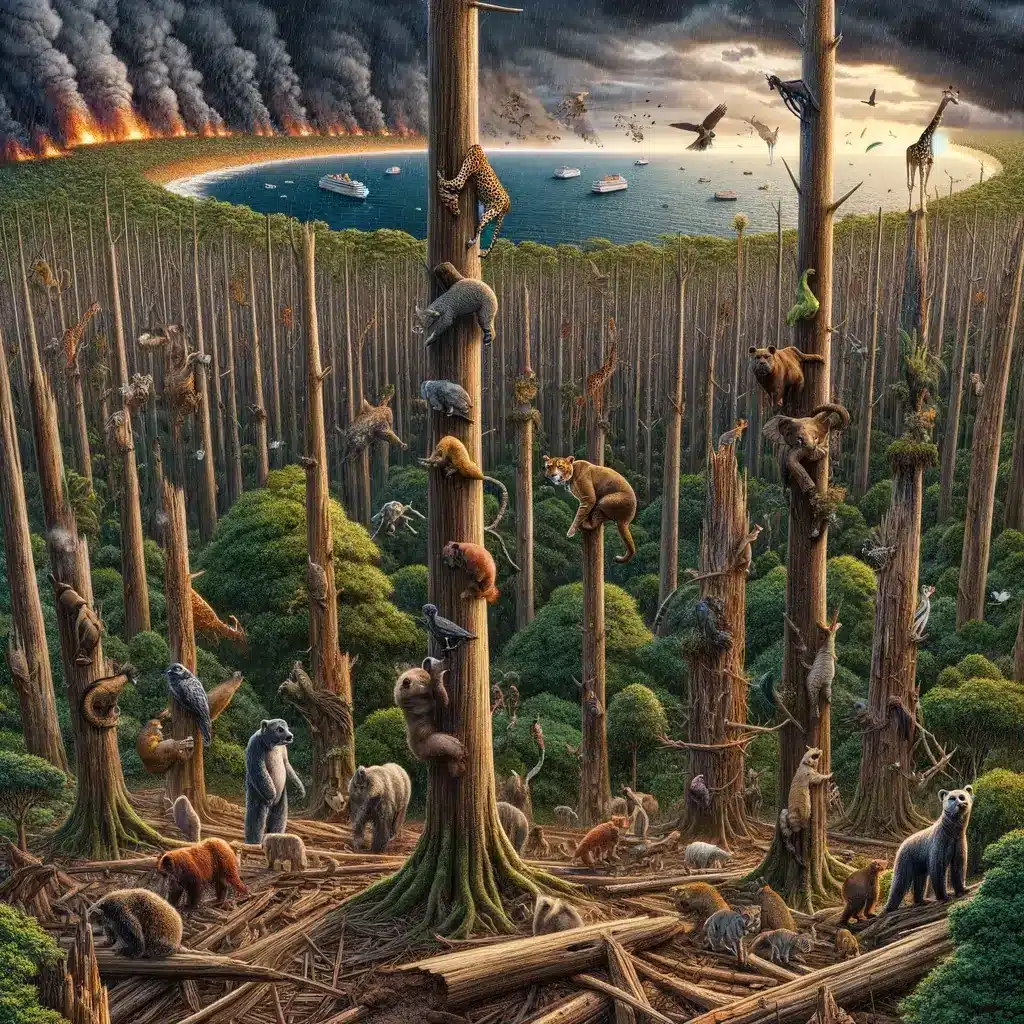New study: The combination of global warming and deforestation may lead to the mass extinction of animal species

A new study by Tel Aviv University and the University of Colorado, published in the journal Nature Climate Change, states that the combination of global warming and extreme heat events, together with the continuation of deforestation (or "deforestation"), may lead to a real danger to life for many species of animals, Especially those with the ability to climb trees.
As part of the research, which was led by doctoral student Amar Zlotnik from the laboratory of Dr. Ofir Levy bSchool of Zoology מThe George S. Wise Faculty of Life Sciences, in collaboration with Dr. Keith Musselman from the University of Colorado, the researchers chose to focus on lizards, and demonstrated how following the phenomenon of global warming, the lizards tend to seek refuge from the hot ground by staying for long periods of time on trees. The bad news is that human intervention in the framework of urbanization, the destruction of forests and the uncontrolled expansion of agricultural areas at the expense of forests, leads to a gradual reduction in the amount of trees located in the living areas of the lizards, which may eventually lead to their extinction.
As the world warms, the importance of trees as a refuge for animals increases
According to the researchers, the climate crisis and the phenomenon of global warming force animals to look for comfortable places to stay, in an attempt to escape from an extremely hot climate. This is, of course, a natural phenomenon that is also used by humans, and even Tel Avivites who usually look for shady corners in the summer months in exposed areas such as HaBima Square and Dizengoff Square.
And this is where the trees come into the picture. Naturally, the trees serve as an available refuge from the boiling earth for animals that know how to climb, especially thanks to the fact that the further you get from the ground, the air temperature is lower and the wind is stronger.
The meaning is simple: as the trend of global warming accelerates, the importance of trees as a place of refuge from the hot ground for animals is increasing. The bad news is that in recent years, in many places in the world, the density of trees is actually dropping gradually, mainly due to human phenomena such as deforestation and cutting down trees for human needs. This is a particularly dangerous situation, in which precisely at a time when, due to global warming, animals depend more and more on trees for survival, the phenomenon of urbanization and deforestation actually leads to a reduction in the number of available trees.
According to doctoral student Amar Zlotnik: "As part of the research, we wanted to examine what the combined effect of these two processes would be on animals. Specifically, we focused on lizards, as these are highly dependent on their environment to maintain a normal body temperature and a lack of comfortable places to stay can affect them dramatically. In the research we used a computer simulation, which simulates where the lizard should be, in the sun, in the shade or on the tree, every minute, for 20 years, under the climate conditions that existed in the past and under those that are expected to exist in the future. Through the simulation, we examined how populations of lizards will be affected by climate change when the trees are available, and how their condition will change following the cutting down of trees in their habitat."
The bottom line: cutting down trees harms the survival chances of animals
An interesting conclusion that emerged from the study is that the climate changes alone, may in some cases even benefit the populations of lizards living in cold regions. This is because the expected warming will allow the lizards to be active for longer periods of time during the day and throughout the year. However, when climate change occurs at the same time as cutting down trees, the positive trend is expected to reverse, so that many lizard populations may find themselves in real danger of survival.
In fact, in areas that are already characterized by a hot climate, the trend of global warming, even without cutting down trees, is expected to endanger the very existence of the lizards, and cutting down trees will make their situation even worse.
Dr. Ophir Levy concludes: "Our research focused on lizards, but it actually demonstrates a broader problem that is relevant to many species of animals. Our results demonstrate that trees are crucial to animals' ability to cope with climate change, and in many cases their availability can make, for animals, the difference between survival and collapse. Our research proves how important it is to preserve forested areas and trees in general, especially in light of the changing climate. As part of the research, we also provide more practical tools for decision makers, such as the height or density of trees required in different areas. We hope that this research will be used to build more effective programs for the conservation and restoration of natural areas, so that we can provide the animals with what they need to survive."
It's time to wake up: climate change is already here, and it's going to affect us all
- The rainforests are in danger due to the reduction of thunderstorms
- How is the climate crisis expected to harm the lizard population in Israel?
- survive by crawling
- Does the pollution migrate from continent to continent?
- Forests require diversity! A forest with different tree species absorbs carbon dioxide better
